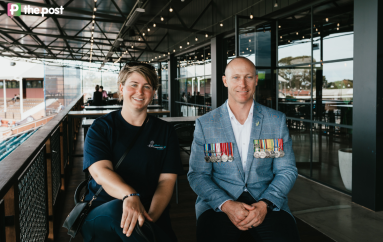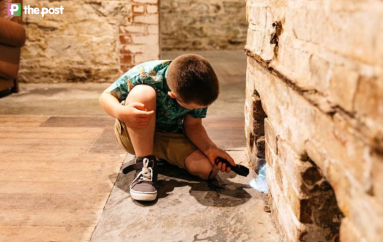SA’s $35m childhood anti-obesity program to be abandoned
The most significant taxpayer-funded childhood obesity prevention program in the history of South Australia is set to be abandoned after an evaluation found no evidence it had any effect on children’s weight.


File photo: Chris Radburn/PA Wire
The Obesity Prevention and Lifestyle (OPAL) program targeted almost 70,000 South Australian children, in more than 100 schools, involving families across 20 local government areas, with the aim of increasing the number of kids in a healthy weight range, and improving diet and physical activity levels.
The program has cost federal, state and local governments $35 million since it launched in 2009, and is the largest intervention of its type in South Australian history.
But an evaluation of OPAL by Flinders University researchers has found that it made no statistically significant difference to children’s BMI (body mass index, a measure of height and weight) over time.
There was no significant increase in the proportion of children in a healthy weight range by the end of the intervention.
Children in OPAL communities had reported doing more exercise and spending less time in front of screens by the end of the study – but so did children in “comparison” communities who were not involved the program. There was no statistically significant difference between the groups, in terms of exercise or screen time, by the conclusion of the intervention period.
There was also no statistically significant difference between fruit and vegetable consumption by children within the program and those outside of it.
SA Health Director of Public Health Services Dr Kevin Buckett told InDaily there was not enough evidence to justify extending the program.
“The program was designed to reduce overweight and obesity, and we haven’t got any evidence that it did that,” said Buckett.
“It would have been nice [to be able to] go back to Treasury and say we need more money [for OPAL].
“We clearly won’t be rolling OPAL across all councils … we just don’t see enough benefit to justify the cost.”
The evaluation also describes a reduction in the “probability” of childhood obesity within the OPAL communities (the probability of children being within a healthy weight range remained the same during the intervention period) – but according to SA Health, this is not considered to be a significant or indicative finding.
The program did, however, deliver some positive outcomes:
- Children were less likely to eat unhealthy quantities of snacks and sugary drinks.
- Children spent less time watching television.
- More children rated teachers as “good role models” for being physically active by the end of the intervention.
- There was an increased use of “physical activity items” in the home.
- More parents reported receiving diet and exercise information from schools.
- Improvements to a “sense of community”.
One in five Australian children is overweight or obese.
All three levels of government had been contributing funding to OPAL until then-Treasurer Joe Hockey scrapped the National Partnership Agreement on Preventative Health in his savage 2014 federal budget.
According to Buckett, the funding cut forced the State Government and local councils to rethink how they would deliver the remainder of the OPAL program – due to end mid-next year.
It also impacted the Flinders University evaluation of the program.
The evaluation team, led by Dr Lucinda Bell, was only able to evaluate half of the council areas involved in the program. The evaluation was also impaired by delays in ethics approval that meant it could only run for three years, rather than five.
Buckett said these limitations meant any effect of the OPAL program needed to have been large in order to be detectable and statistically significant.
“What we’re intending to do is learn from the program,” he said, adding that SA Health would continue to fund community-based obesity prevention programs – but not OPAL.
SA Health commissioned Emeritus Professor of public health and community medicine Stephen Leeder, of the University of Sydney, to provide a peer review of the Flinders University evaluation.
Leeder’s review concludes that: “The evaluation of this program has been severely limited by shortened exposure time, the likelihood of non-response bias, small sample sizes and the collapse of the core funding of the OPAL program.”
“The methods used were a brave attempt to compensate for the difficulties with the program but the struggle was unequal.
“Consequently, while much may be learned from the project about the feasibility of community development, the techniques of school-based health promotion interventions and more, we simply do not know how effective these approaches are – as judged from this study – in modifying childhood obesity.”
InDaily understands that SA Health met with councils involved in OPAL to discuss the results of the evaluation yesterday afternoon.
Local Government Association CEO Matt Pinnegar told InDaily the OPAL program had delivered “a number of positives outcomes for communities”.
“We will now work through the findings of the OPAL evaluation report with our members to identify any opportunities for councils to build on these outcomes,” he said.
OPAL was originally the brainchild of Rann-era Health Minister John Hill.
Hill was “impressed” by the successful European obesity-reduction program EPODE (Ensemble Prévenons l’Obésité des Enfants or Together Let’s Prevent Obesity in Children) during a visit to France in 2007, and wanted to replicate it here.




